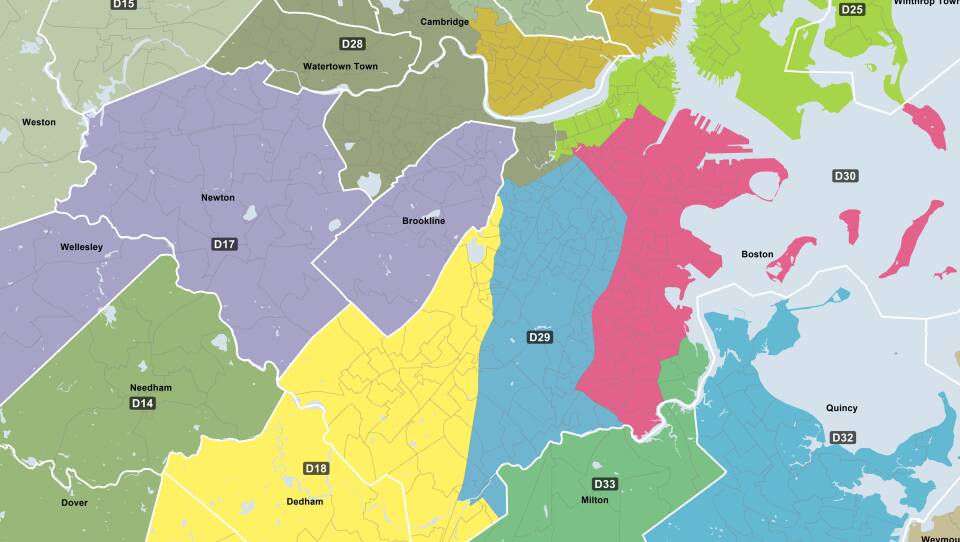Big changes are coming to the state's political boundaries, with lawmakers proposing the creation of two new majority-minority districts in the Senate and 13 for the House of Representatives as they update districts following the 2020 census.
More Politics
Legislative leaders say the proposed changes are in line with the federal Voting Rights Act and could result in a greater number of people of color serving at the State House.
Outside groups have been urging legislators to increase minority-dominated districts so that people of color can compete to win seats in a legislature that isn't currently representative of the state's population or demographics.
The Senate's plan, ushered through the Legislature's Redistricting Committee by Sen. William Brownsberger (D-Watertown,) creates a new majority-minority district based around the city of Lawrence to maximize Hispanic political power there. That seat will be open next year because Methuen Sen. Diana Dizoglio is running to become state auditor.
The second new majority-minority Senate district, anchored by the cities of Everett and Chelsea, is currently represented by Sen. Sal DiDomenico.
The Senate plan would also redraw the Boston district currently represented by Sen. Sonia Chang-Diaz to unite African-American neighborhoods into a stronger Black voting block.
Brownsberger said the committee believes "Black voters of this district will be capable of electing the candidate of their choice" in upcoming elections starting in 2022.
"In the Senate, we are proud that the proposed map adopts our recommendations to unite Lawrence with the similar community of Methuen, rather than Andover, and also strengthens BIPOC representation in Worcester and Springfield," Beth Huang from the minority voting rights group Drawing Democracy Coalition wrote in a statement praising the new legislative proposals.
The House's additional 13 majority-minority seats will be centered on Brockton, Framingham, New Bedford and other municipalities with large minority populations.
House Redistricting chairman Rep. Michael Moran said the non-Hispanic white population of the state has decreased seven percentage points since the 2010 census while the Black population increased by almost 17 percent, prompting lawmakers to seek out more areas where people of color can mount winning campaigns and join the legislature.
"We have created 33 majority-opportunity districts in the House. That's up from 20 before this process started," Moran said. A majority-opportunity district is how lawmakers are characterizing districts in which people of color predominate.
"We are particularly pleased to see that the proposed House districts follow many of our recommendations to increase the number of majority-BIPOC districts and build political power in our communities," Huang wrote.
Because, since 2010, eastern Massachusetts gained more population than the western part of the state, several western Mass. districts will have to expand their eastern boundaries.
The public has less than one week to comment on the proposals, which could go before lawmakers for approval as early as next week.
Brownsberger and Moran said proposed maps covering the state's nine congressional districts are expected to be finished as early as next week.








